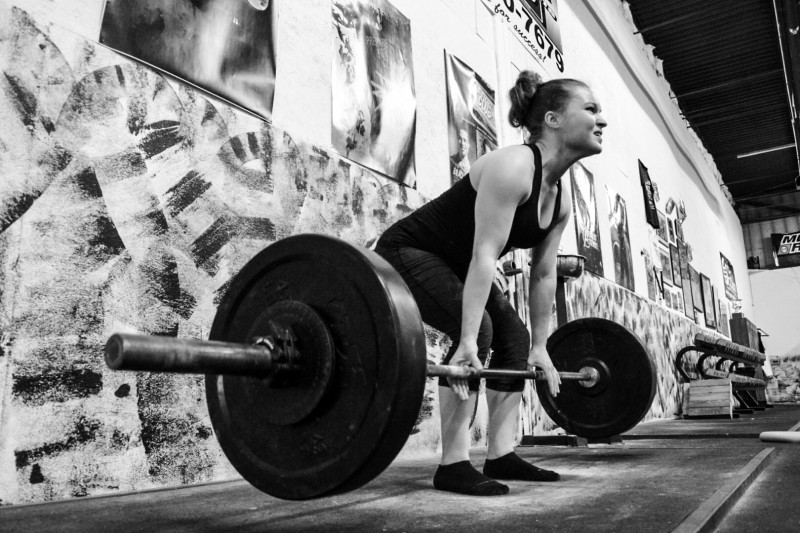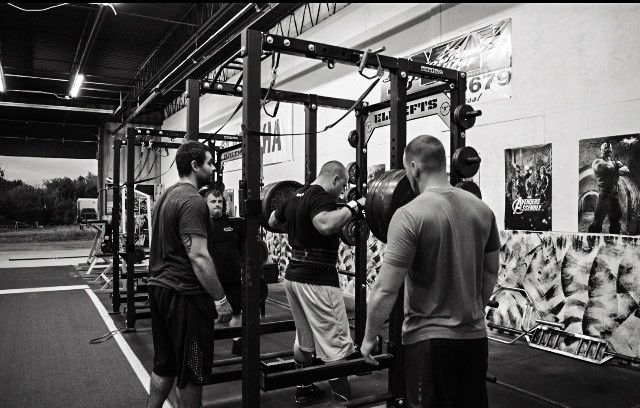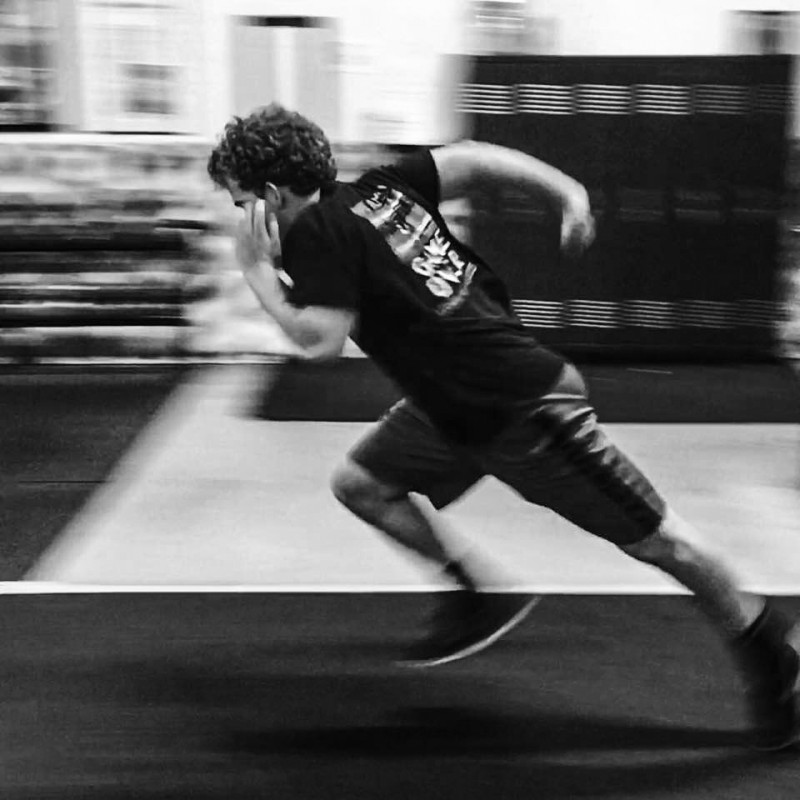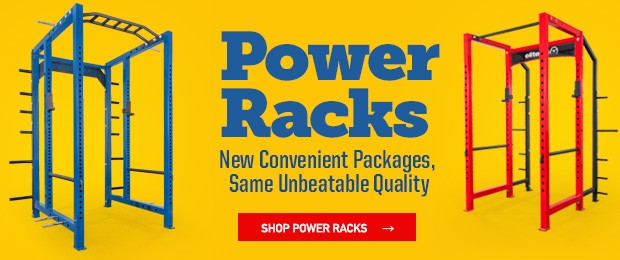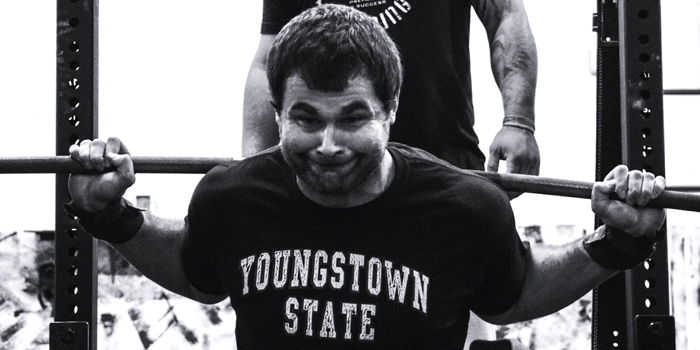
Throughout the past six years of coaching, I have had a great opportunity to coach a lot of awesome individuals. My clients have ranged across the clientele spectrum from novice clients to experienced athletes. I have found very consistent similarities between the different levels of people I have trained, which resulted in the formulation of the Training Arriving Model. I use this concept in my coaching practices and I teach it to my clients to help them with their conception of their training experience and development. I have worked primarily in a private setting; however, I also coached for the Youngstown State Olympic Sport Teams. It is important to note, no matter who my client is, I follow the same principles of training, and the variables are just scaled to each individual.
This article is written for coaches, as well as those training who most often fall into the adult population under the categories of: general population, powerlifters, bodybuilders, and arguably CrossFit (although I am not a CrossFit coach, if you are involved in CrossFit you may be able to relate to this article). As far as competition team sport athletes, this model can be applied to the individuals, but it would deserve its own separate focus and application, as the motives for training goals within a sports team are different than an individual.
Competition teams are primarily forced to train for their sport(s) and this model focuses on the individual engaged in the process of individual training for themselves. I will discuss working with clientele from the private setting, working with people who are engaged in strength training (squat, bench, deadlift variations) and all the accessory work that goes along with this, as well as conditioning. Furthermore, this article will identify other clientele needs that are often desired from a coach which are unique variables that affect performance and establish the particular Level a client is operating within. These variables also often assist with identifying distinctive challenges required to conquer in order to progress.
LISTEN: You Can't Manage What You Can't Measure
I began to use the term arriving after borrowing from a professional colleague who uses this particular jargon in the counseling field for when people experience a significant mental shift of readiness, and voice and demonstrate a newfound readiness to take action. I started seeing how this concept was present with and within my clients, and couldn’t help but notice how accurate this word was in my day-to-day coaching experience no matter who I was working with. After I experienced my own paradigm shift, I started to apply this concept of arriving even further by implementing the awareness to my clients (often facilitating their growth) and applying the principles in my daily conversations with them at the gym, illustrations of the model in my gym on the whiteboard where it is visible daily, in my weekly newsletters, and in our One Evo Free reports. A unique shift for me was that I had always seen my clients in this seemingly progressive (or static) state of levels, but I now had new terminology and an illustration that I could use with my clients to help them understand their own developmental path with training.
As a coach, I had to understand where my clients were at on the T.A.M. spectrum and where they wanted to be (if they even knew). This understanding assisted me in identifying successful strategies that not only helped me coach them to get the most out each client in order to help them evolve but also to allow my clients to help themselves. Once I’ve noticed they’ve arrived at any particular level, I now know where I stand with them as far as a working relationship between the two of us, and I am able to help them see where they are (metaphorically and literally speaking). Finally, I can prepare them for their journey toward arrival to their next level if they so desire.
As my clinical consultant pointed out, the process is much similar to those engaged in a counseling relationship. Prior to the relationship, a client is unsure about change and often does not know if they want or need help. They are unable or unwilling to take action. They are unaware of where they are (figuratively). However, they may experience a critical moment or breakthrough where they realize they need professional guidance, so they hire you (coach or counselor) and you begin the steps of your professional work together. Clients begin to identify their goals, and coaches develop the plan and the techniques to help get them there. Together, they measure their progress along the journey, constantly checking in with one another, modifying things as needed, and encouraging progression toward the finish line.
I am writing this article from a coach’s perspective. If you are not a coach, please reframe these ideas and put yourself in the shoes of discussing the clients.
The Three Levels of Arriving
Level One
Level One is the beginning. This is the stage for someone who has never actually formally trained and has minimal awareness of the training process, realistic goals, what they are capable of, and often what they even need. They may not even be aware of the training culture (how to dress, prepare for training, what to bring, how to eat to perform, and common, basic gym etiquette). They may have even gone as far as searching on Google or YouTube for gym knowledge to try and understand how to act in a training environment. These are all factors that a Level One may present that a coach must be, at the least, aware of. To truly help an individual, the coach must know how to respond to these clients on an individual basis. A coach must understand that these people walk into their doors generally knowing one thing: they want to be better than where they currently are (bigger, stronger, leaner, healthier, etc.) and they need some guidance to get there. They are often cautious and uncertain. They may be incredibly self-conscious, quiet, and awkward, or pleasantly outgoing but still visibly lack confidence. Still, others in this category will immediately put on a face of determination, but often need heavy coaching and instruction.
Part of the T.A.M. is honoring clients where they are, and learning what their motivating factors are. All Level Ones (the same for Level Two and Level Three) come with internal and external motivating factors. Knowing what they are is the key to helping them not only stick with their training, but also for progression.
Examples of external motivators for Level Ones are often driven by outside life stressors such as the desire to be seen as fit and attractive by others, relationship changes, relationship loss, medical crises, job change/job loss, desire to look their best for an upcoming event, revenge body mindset, desire to belong to a group, etc.
Internal motivators are like they sound; they come from within. A Level One client will most likely draw energy from external motivators first, but the strongest drive lies within their mind and heart, and clients with more internal motivation will push themselves to show up to train whether there’s applause or not. These are the individuals who have made up their mind to commit to a new healthy lifestyle — one which includes regular physical fitness and weight training. Their internal desire is to look good for themselves, to be the best that they can be for themselves opposed to others, to better themselves every day, to compete with themselves, and to enjoy the journey. These are examples of internal mindsets and self-talk that drives these individuals. They may not have fallen in love with the training process quite yet, but most Level Ones with strong internal motivation progress to Level Twos by intention and some by default.
One example of the most basic Level One clients are individuals who just needs to start doing something; those who seek a healthier, more active lifestyle. Level Ones desiring to become more physically fit need someone to guide them to help them learn, keep them safe, encourage them in the beginning when creating new habits is the hardest, and allow the opportunity for fun and camaraderie. These clients are often the most vulnerable to giving up and quitting, especially if a coach does not understand and honor where it is that they are at mentally and emotionally (honoring even the sheer courage to step into a gym to try) and what their internal and external motivating factors are that drive their behavior. A Level One needs to discover what they don’t know.
Another example of a Level One is a former athlete or dancer/gymnast/runner, and it has been years since they had to train for their high school/college sport or previous life of competition. They have some basic ideas regarding what it is like to train consistently and to follow the lead of a coach or instructor. They may come with an intact understanding of how to dress, act, respond to coaching, and other lifestyle factors that support their training goals. They may also come with bad habits from previous training experience, or from a long period of abstinence of physical participation, may be rusty in their knowledge and skills.
What does someone of the most evolved Level One look like right before they enter Level Two? What are their habits and what is their mindset? They start to make training a priority in their life. They show up consistently and do a good job at taking very basic coaching and advice. They take simple training cues and allow for small lifestyle changes. These people should be praised for taking action towards their goals and each new goal they reach. They are going to go in one of two directions: either progressing up to a Level Two, or backward to not having any focus or direction. Very rare, in a strength and conditioning setting, does a Level One stay a Level One for a long period of time. It’s either progress or digress.
It’s extremely important to realize that just because someone has taken a step to sign up or start training, it does not pre-qualify them as a Level One client. I have experienced many times new clients who come for a month or two, refuse to arrive into a Level One, and end up quitting. In a perfect world, Level One will last anywhere from six months to a year of dedicated training. This will allow enough time to ingrain positive reinforcement, goal setting abilities, a vision for themselves, and self-confidence, which most often will allow for them to naturally arrive at Level Two with a whole new perspective, knowledge base, skill set, and wisdom. However, when little motivation is present, Level One is prone to a 50/50 chance of finding a reason to skip training for the day. Training has become a priority, but not high enough yet to contemplate not missing training.
Level Two
When you begin working with a Level Two client or once a Level One client arrives at a Level Two (again usually between six months to a year) you are honored to witness a new mentality and shift in approach to their training. As a coach, it is an honor to be chosen as a coach and assist in someone’s journey. They have chosen you and you are partially responsible for this shift, of which you may humbly take some small credit. However, the majority of the praise is due to the client and this is an important factor to reinforce to the Level Two client. Making sure the Level Two client owns their arrival is an important piece of expectations at my facility.
For newly progressed Level Twos, training now moves up much higher on the priority list. Instead of it being just a priority in their life, it’s now a huge priority to make sure they get their training in and they place a much higher value on the quality of their training. You often see this “fire in their eyes” when they show up to train. You can tell they are there on a mission to execute their workout even if they’ve had a bad day. On any given day, Level Twos are much more confident and not afraid to add more weight to the bar or try new exercises. Now they are curious about how strong they can really be or will express statements like, “I want to see if I can do that exercise.” In my opinion, this is the sweet spot for a coach to get the most out of their clients.
Within the initial arrival of a Level Two or after a few months into demonstrating true Level Two behavior, your clients will begin to show even more trust in you. It’s only human nature not to take advice from one source at the beginning, as they will want to seek out answers on their own. This is also another very common mindset of a Level One, but if you build rapport with them and continue to help your clients see and produce results, you will find a very high level of trust in which you have cultured together throughout their training journey. As a coach, this can be a very powerful time of influence, so it’s important to handle this appropriately and responsibly.
Something noteworthy to be aware of, as either a client or a coach, is that a Level Two will probably be the highest level of progression most people will ever aspire to reach. Their personality may not be implicitly designed for further growth, or training will never be important enough in their lifestyle to reach a Level Three or even desire to obtain. When little motivation is present, Level Two people will most likely still come to train but may either go through the motions or complain about how they are not feeling it for the day. Despite this, they will still train and give a solid effort. And in all reality, most people will be more than fine at operating at a Level Two, which is okay, as long as it’s okay with the client. The coach must honor their stance and continue to provide the highest quality of coaching and guidance in sustaining the growth a Level Two has attained, and which the client can maintain because it will still be valuable to them as a holistic piece of their lifestyle. A Level Two can stay there for years on end — and again, this is okay as long as it is recognized and responded to for what it’s worth. It is the healthiest balanced approached one could probably take with maintaining training.
Level Three
Very few will ever reach this level, for various reasons. It takes a certain type of individual to desire to arrive at this level of training. The Level Three clients have always been a Level Three before they ever arrived. A Level Three most likely has a Type A personality and is very driven and competitive. They are an alpha type person/personality who will go to extreme measures to get the results they want. They absolutely love training, and it’s a form of identity. Training hard is exciting to them and they work their life around their workout schedule. The exercises they despise the most, they will still perform if it means helping reach their full potential. Levels One and Two will most likely try to avoid their weaknesses well before a Level Three would. Training as a whole is not only a high priority in life but one of the highest levels of passion they have.
Actual Level Three clients, when little motivation is present, will not dwell on a lack of motivation and will handle their training accordingly and get the job done for the day. Level Three clients, however, can often be the hardest level to coach. They will be able to give excellent feedback to coaches, but will often let their Alpha mentality cloud their willingness to let a coach give them coaching cues. If they can take coaching like a Level Two, then the sky is the limit for them as an athlete! When you have the three elements of true passion, ability to give feedback and to be 100% accepting of your coach’s advice, this is the perfect storm for a client and a coaching relationship.
However, while being a Level Three sounds like an awesome place to be, it may not be as cracked up as it seems to be. Because Level Three type athletes place training as a very high priority in their lives, training will most likely affect other areas of their life, and both the athlete and the people around them must be ok and understanding of that. That’s why a Level Two client is most likely the sweet spot for most people to handle. They get in the gym, do their work, and still live a pretty somewhat normal life outside other than following basic diet and wellness tips. They still enjoy life as a “normal person” on a daily basis. On the other hand, Level Three clients will most likely not find much balance until they take some time off of training, which is extremely hard for them to do, or until they are forced to. Level Three clients should be well aware that this is who they are and learn to accept it if they want to stay a Level Three. If they cannot handle the responsibility of realizing life outside of the gym will be sacrificed, they may want to consider dropping down to a Level Two so they refocus their goals in the gym and their life.
Conclusion
Looking at the general population, powerlifters, bodybuilders, and possibly CrossFit athletes as well, you can see how these qualities can be broken down by the model I have designed. This can help you categorize clients and process which level they are currently at on the spectrum. It gives an idea of what to expect from them based on where they currently are, and how they will most likely react to certain variables, training cues, and training programs. The T.A.M. is a guide for how far a client can be pushed by a coach, and how far a client can and will push themselves. Using T.A.M., a coach knows what to expect from certain clients, and can be used to guide the client where they want or need to head. Not all clients are equal (physically, mentally, emotionally), so at my training facility, I take great care in orienting my clients, getting to know them, observing their behavior, and truly listening to their mindset and how they conceptualize training at each level. Overall, the more a coach knows their client, the better a coach is equipped to help them not only with their training but their long-term fitness journey as well.
And using the T.A.M. model, coaches are also able to refer clients to other coaches and fitness experts in conjunction with what the client is involved in. I believe it is our professional duty to help people find the right fit for their health and wellness needs, as it can make or break their love of the fitness process.
Bonus: Social Dynamics
I wanted to add this bonus section to the article because I feel it can go hand in hand with the three levels of client arrival as discussed above. I wanted to discuss briefly the social dynamics of training, which helped me produce the concept of coaching Levels. There are different tactics and methods to getting the most out of your male and female clients — or perhaps I should say characteristically masculine and feminine clients. Females can possess primarily masculine qualities and males can possess feminine qualities or even a blend between the two. This takes time for a coach to learn client behavior and motivational needs, and arguably distinguishes a coach’s level of expertise.
In a masculine environment, you should work more towards letting them go to work and feel they are in control of dominating their workout. Step into coach with your standard training cues, give advice as needed, tell them “good job”, “keep killing it”, “you’re on fire today”, etc. when a compliment is required. When motivation is needed, the best way to motivate them is to challenge them to rise up to the occasion and make them question their masculinity (this can work against you if you’re wrong about the masculine characteristics of your client). Overall, a more masculine client will be driven by minimum external encouragement and maximum honor of their internal drive.
On the other hand, in a feminine environment, other qualities and variables are needed for the person to feel safe. They need a lot more positive feedback from not only the coach but even peers, and primarily need reassurance. The best way to motivate them is to tell them how good they’re doing and help paint a picture for them where they can go from there. When things get tough for the feminine, you do not challenge them; you encourage them by verbally and emotionally building them up, and reassuring them to believe in themselves. Generally, a characteristically more feminine client requires more external motivation and encouragement.
MORE: The Mythos of Training Female Athletes
Again, the masculine and the feminine are simply personal culture traits that one shows, not necessarily used to compare men and women. This is simply a way to approach and push your clients once you know how they better respond to your coaching. The key is to know which style is more dominant for each client, especially during pivotal times in the training process. I do realize that not all coaching environments can distinguish between these qualities, and if so, that is also understandable given the dynamics of each situation.
When it is possible to take advantage of social dynamics and pair them with the above arriving model, it will really help progress a client by helping their personal development throughout training. It is important to note that you must become familiar with your client first to understand which qualities they possess, or if they become interchangeable at various times throughout training.
Joel Younkins has been training consistently since junior high for athletics, primarily for football. Joel played football for Youngstown State and also graduated from YSU with an exercise science degree. After his career in football, he began coaching as an intern for the Youngstown State Olympic Sport Teams. After graduating college, Joel started his own private facility, Joel Younkins Training, in the Youngstown area, where he trains multiple levels of athletes, general population clients, and powerlifters. Joel, to stay in touch with his competitive and athletic roots, is now a competitive powerlifter as well as a full-time coach. Joel also began his supplement line in 2015, One Evo, where he and his team of professionals spread their knowledge to offer value to their readers and customers to share quality training and self-development information.









